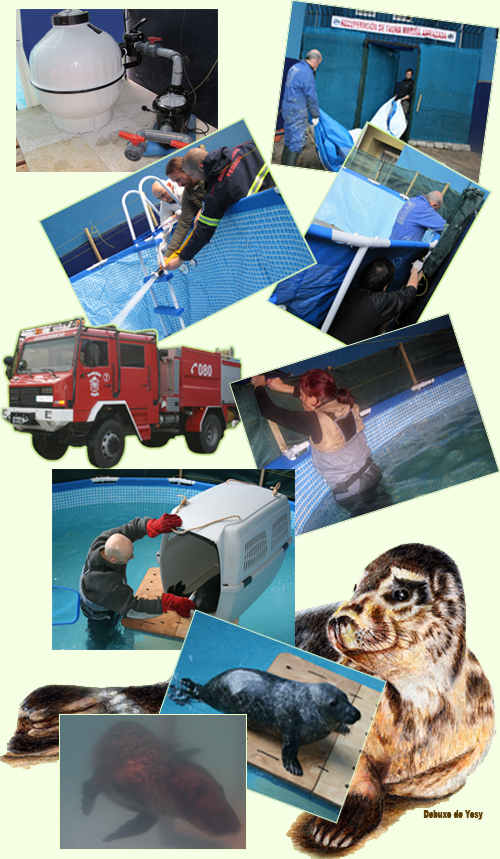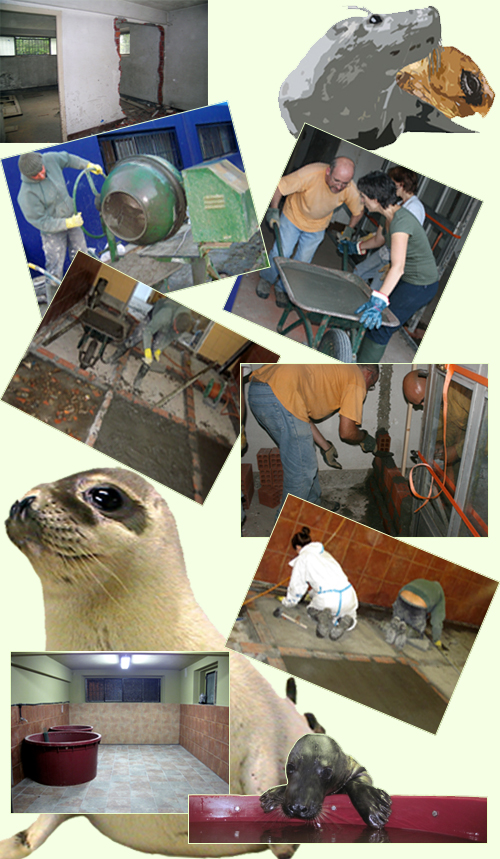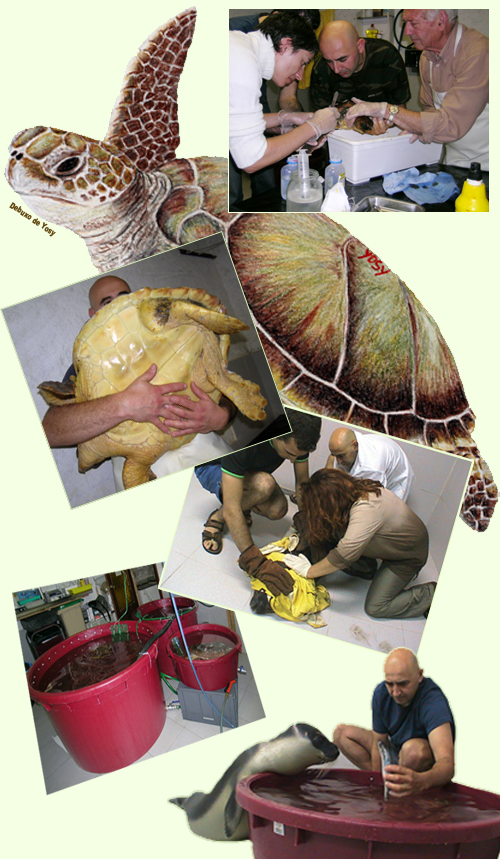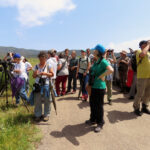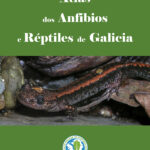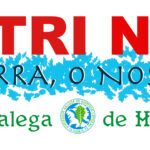
‘A country can be judged by the way its animals are treated’. Mahatma Gandhi
‘Man has made Earth a hell for animals’. Arthur Schopenhauer
A year has already passed since the beginning of this project. Looking back, we think that a real commitment to rescuing these animals already existed for the Marine Mammals Section in the year 2000. There was a willingness and a desire to assist sea lions and turtles that were regularly stranded on Galician coasts since we directly experienced this situation with the frustration of not being able to provide a solution. In addition, setting this project in motion not only filled a gap in Galicia, but also in the entire Iberian Peninsula where there were important deficits in that kind of assistance.
The link with marine mammals is part of the fundamental characteristics of SGHN because the institution has come a long way defending and studying these animals from its inception. Since 1999, in collaboration with CEMMA, a Galician NGO dedicated to the study and dissemination of marine mammals and sea turtles in Galicia, thus permitting regular contact with cetaceans, seals and turtles.
Thanks to an agreement with the Galician government, CEMMA launched an uninterrupted and long-lasting initiative to the point of becoming the only responsible institution for providing assistance with strandings along Galician coast, specimen bank management, population-based studies of the species and drafting management plans for the most threatened species. The agreement also included rescuing injured animals despite all imaginable difficulties, such as working on the beach with very limited resources.
The all-year-round appearance of seals and turtles in trouble constituted a call for action. These animals needed much more than first aid on the shore. Seals, in particular, are removed from their birthplaces even just a few months after birth. Winds, currents and the usual scattering of an inhabitant of the vast sea area that faces the geographical feature of the North coast of the Iberian Peninsula and many human-made challenges such as fishing gears, rubbish and nets drifting in the ocean constitute likely unsurmountable obstacles that small animals who are still learning may not overcome by themselves.
In the large majority of cases, grey seals (Halichoerus grypus) are the species that arrive that arrive in Galicia with the highest frequency, followed by hooded seals (Cystophora cristata) and harbour seals (Phoca vitulina).
Regarding sea turtles, the loggerhead sea turtle (Caretta caretta)is the species that mainly that, for the most part, are housed in the ICU facilities. They are solitary animals that, after emerging from the nest and getting near water, begin a pelagic stage driven by ocean currents and living off seaweeds, such us furbelows. When the turtle shell reaches 60 cm, the loggerhead sea turtles change their habitat moving to deep waters, close to the seabed. Specimens of South-American origin in pelagic stage appear on Galician coasts.
They are little animals that, after coming in contact with Galician cold water, they become stranded or run into driving nets, garbage and hooks, all of which are enemies of this highly threatened species. Also, we have rarely registered green sea turtles (Chelonia mydas), but there has been no record whatsoever of live leatherback sea turtles (Dermochelys coriacea). In every recorded stranding, leatherback sea turtles were either dead or accidentally caught in fishing devices and released by the fisherman following our instructions.
Twenty green seals, six hooded seals, two green sea turtles and eight loggerhead sea turtles were sheltered in our ICU. They had spent different periods of time, which could be anything from a few days to almost a year. A small room at the old hospice facility, where the headquarters of SGHN Ferrol were located and where the museum was taking its first steps, was properly prepared to be used as a wet room. Hence, it served to shelter those animals and to give them the care they needed. With our first cases, the room provided rest for the sick animals during the journey to South Galicia, where CEMMA had already begun treating hurt animals. Thus, our wet room was gradually becoming the most suitable location to give veterinarian care, which constituted a first recovery phase. Since then, the facility has not been vacant one single season.
We have spent thirteen years experiencing more difficulties, according to our figures, than we have satisfactions. However, the satisfactions were so fulfilling and compensated so completely for the difficult and bitter aspects which occurred during this period that we keep moving forward. This result showed us that hope and dedication help to achieve almost any goal. We have had numerous successes since the day we found on San Xurxo beach, a nearby shore, a weakened grey seal among the rocks. We carried the grey seal to the wet room to provide all possible help hoping that the grey seal could continue its journey and have a second chance in life.
After sheltering this grey seal and the animals that were to come in our facility, we gained experience and knowledge about its behaviour, biology and problems. Most of the results obtained throughout these years have been successful. The high survival rates helped to cushion the sad and hurtful cases in which the animals could not recover.
We moved to the ancient colonel’s house in 2011 with our exhibition material. However, the limited economic means and infrastructure forced us to keep the fauna recovery centre on standby. This set our next goal: creating with our own hands a new and even better ICU. Thanks to the provision of material —such us tiles and cement— from many friends and colleagues our seeming impossible dream became a reality.
However, the voluntary and free labour of the people who believed in the project and in the need for it to continue was vital to establish the new ICU. In addition, the economic support from the museum —sharing its already meagre budget— and from the SGHN’s Astronomy section —always willing to help with every project and initiative— was also very important. When the first seal of the season appeared, the building was not completely finished. Despite this, we inaugurated this installation made by community support.
This recovery project of threatened fauna takes part in the Galician government’s Network for Beached Animals, which is managed by CEMMA. The project was responsible for the provision of first-aid care to the animals which arrived in poor-health conditions to the Galician shores until 2012. These animals needed veterinarian care and special treatments. In most of cases, the treatment was supplied outside the water because this way it was considered more appropriate.
Nevertheless, the facility was not prepared to furnish the final rehabilitation that would allow the animals’ full recovery, which is needed to release it with guarantee of survival. This stage also constitutes an adaptation, since the specimen needs to forget its dependence on human contact as well as having been fed for long. This second stage would need different facilities than those used in the ICU, where there are small bathtubs filled with water. At some point, the animals are introduced in the bathtubs when it is required due to injuries or other difficulties.
A number of circumstances helped us to overcome the challenge of finishing the rehabilitation in the museum’s facilities on time. Our colleagues from Centro de Reabilitação de Animais Marinhos de Quaios (Portugal) [http://socpvs.org/cramq.php] generously provided an above-ground tarp swimming pool with 13 000 litres of capacity. The Sociedade Portuguesa de Vida Selvagem uses one of these pools, with which they nursed lots of animals with great commitment and success. The sand filter, the engine, plumbing material, etc. were need in order that the animals could swim in the hygienic conditions they needed. These materials were purchased by CEMMA, who made an important economic endeavour to obtain them and to kickstart an exciting project for everyone.
Thus, we eagerly began to build a hut for the sea lions behind closed doors. This way, animals could strengthen their muscles outdoors and away from human contact —as far as possible— while being safely under our supervision. The empty space between the wings of the museum building was a gift. This area with three walls, a fence and a firmly settled concrete floor met all the conditions to create a new complementary rehabilitation room just a few metres away from the ICU.
An intense work had to be done, such as a deep cleansing, installation of cloaking nets in places where interruptions are frequent in order to establish a silent area away from daily noise. Our colleagues from CEMMA supplied the equipment —a pump and a filter— and calculated the basic purification system, the recirculation time of water in the pool, the correct pH value and the required setting for water chemical levels, especially chlorine. The vessel can now shelter an animal without interference.
It is necessary to highlight the praiseworthy behaviour and effort of many friends and contributors. Plumbers, sweepers, strong shoulders to carry materials and smooth hands to tie each thread in place were required. We worked as fast as possible overcoming difficulties such as matching the filter and the engine in the pool as we were making sure the water did not leak out. When it was time to fill the enormous vessel, we realized that it was an impossible task for us. However, the Fire Brigade of Ferrol came to our aid, carrying thousands of liters of water to the hut. Thanks to their involvement, we were ready shortly to shelter our first tenant: Castro the sea lion.
Our goal was accomplished and the animal completed its rehabilitation time. However, any other seal could not be sheltered after the tarp experienced an unexpected and inexplicable tearing. We had to look for another way to shelter the second seal, who was received by the IGAFA in Vilagarcía de Arousa. This is an unfinished tale because we still have to level out difficulties and overcome many failures. Our objective is to obtain the best conditions for the treated animals and we will do it while we are constrained by the expenses of our initiatives. When we are out of the season in which animals keep appearing, we start to analyse about the changes we should make and the improvements we need, always considering that we cannot get everything we want. Nevertheless, we have always gone forward since our beginnings, bearing in mind this quote from Socrates: ‘To land on the wisdom island of wisdom, first you need to sail across an ocean of distress.’
Text translated by Sergio Méndez Fernández (student of the Degree of Translation and Interpretation of the University of Vigo)
